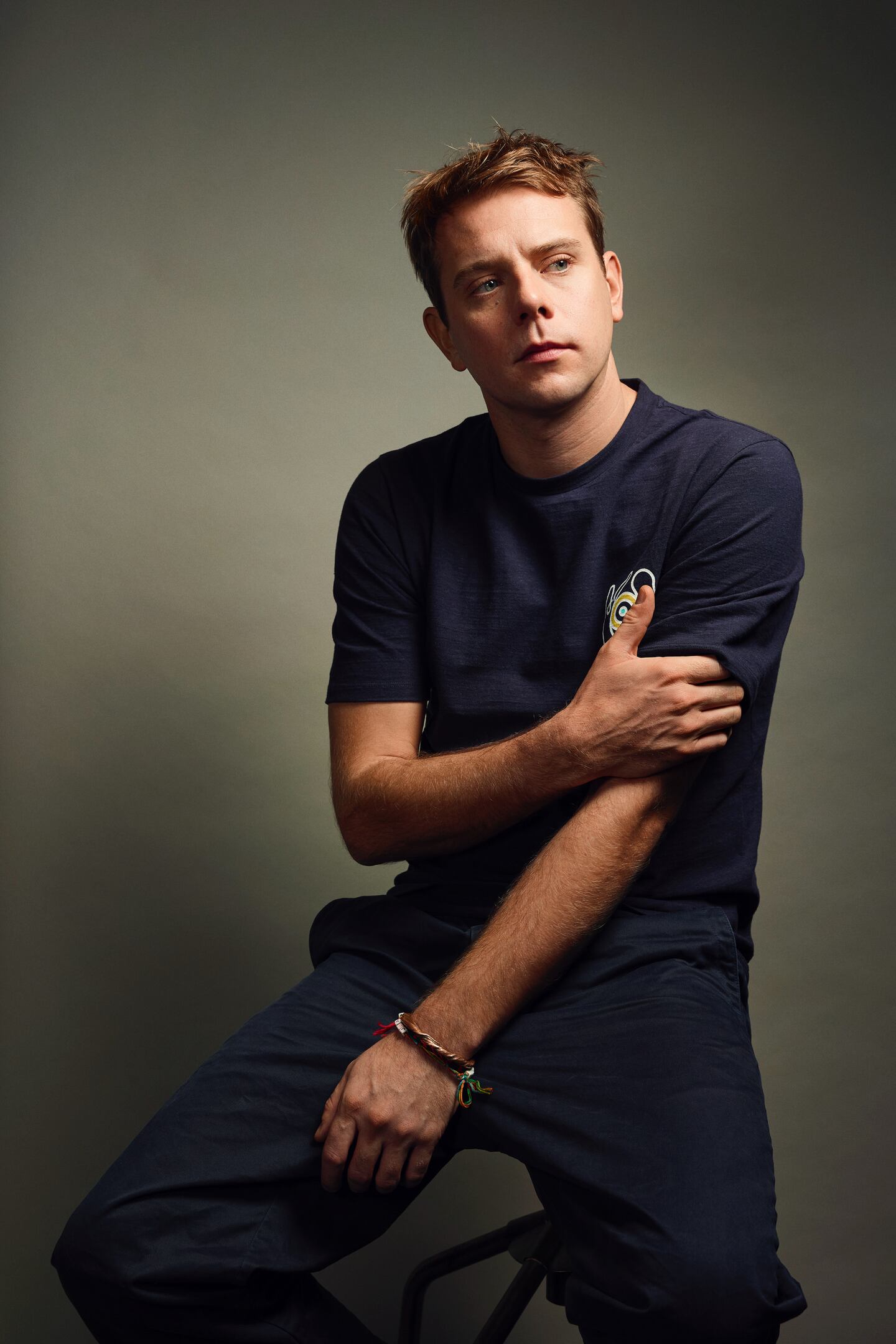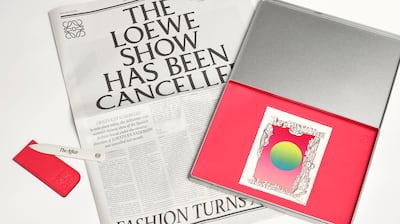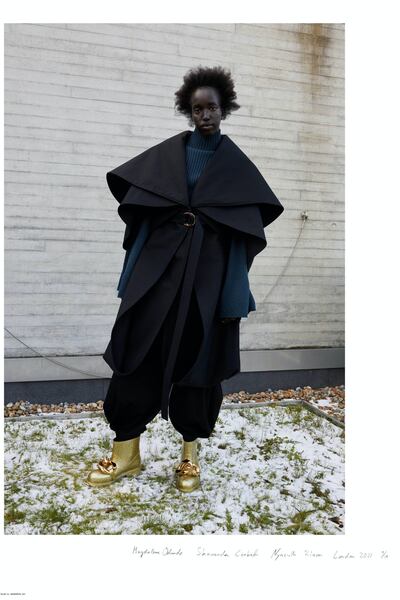
The Business of Fashion
Agenda-setting intelligence, analysis and advice for the global fashion community.

Agenda-setting intelligence, analysis and advice for the global fashion community.

“I will never go back to the way my mind was before all this,” said Jonathan Anderson, speaking to me, but also speaking for many of us, via Zoom, our new medium of choice as the world changes in deep and as yet unknowable ways. This is usually the time of year when fashion brands lay out their wares for the key autumn/winter selling season. In other words, shows. Not now. The virus put a stop to that.
A year in and it’s proving to be highly unpredictable. Fashion’s future is a seesaw.
I’ve had two long conversations with Anderson over the past ten days. One was about his own label, the London-based JW Anderson; the other was on LVMH-owned Spanish leather house Loewe, where he is creative director. But we ended up talking about many of the same things.
At first, Anderson was feeling demoralised. “It’s definitely very hard this year,” he said. “Last year was really easy, you were kind of excited in a weird way. You were, ‘Oh wow, we’re in a pandemic. What exactly is this biblical thing?’ It was all about the news. Now I can’t even watch the news anymore.” What he had been watching was the BBC’s new six-part “Can’t Get You Out of My Head,” an “emotional history of the modern world” by Adam Curtis, whose signature is creating a kind of surreal sociological poetry from the sheer chaos of everything. But more of that later.
ADVERTISEMENT
Brexit hasn’t helped. “I’m a British designer, I find the Brexit thing difficult,” said Anderson, who was born in the town of Magherafelt in Northern Ireland and now lives in London. “We live in a democracy that probably isn’t technically working, but ok, this is happening, so we deal with it. Still, I feel bruised because you’re trying to defend the country you live in and you’re proud of it, but at the same time…” That was hardly a sentence he needed to finish.
I will never go back to the way my mind was before all this.
But Anderson was clear about the challenge the hydra-headed crisis poses for fashion.
“Anyone who is making anything now is remarkable,” he said, “but at the same time, that doesn’t mean you have to remake what you’ve done before. Everybody should be looking for different ways to do things all the time. The other interesting thing is having the opportunity to create something that lasts.” Many of his peers have opted for digital film as a way to communicate their work, efficiently delivered to your screen. But how little of it has permanence! Anderson’s response has been a glorious experiment, a series of eight conceptual exercises produced in collaboration with London design studio OK-RM for his own line and Paris-based art directors M/M for Loewe, packed in boxes and delivered to your door.
His “Show in a Box” allowed you to build your own little set and stage your own little puppet show with Loewe’s Spring/Summer 2021 collection for men. His “Show on a Wall” supplied wallpaper, glue and brush, plus life-size printouts of models wearing the same season’s Loewe collection for women, encouraging you to create a living environment for the clothes. For his own line, Anderson commissioned Juergen Teller to shoot huge posters for the men’s Autumn 2021 collection, then duplicate the exercise with his womenswear on a lithograph-worthy paper stock, balancing the populism of one with the preciousness of the other. Anderson also staged an “Exhibition in a Box,” a collaboration with photographer Tyler Mitchell for Moncler’s Genius campaign.
“I see the year as a complete entity,” he said. “It’s like one collection that took a whole year, one physical object, just in multiple chapters. When I look at them all together, it’s really like a Filofax, like these chapters that turned into printed ephemera. I can’t write a diary, but this is the diary of my pandemic. I’m so glad it’s not a moving image, because when I do those things, I can’t watch myself. There’s something magical about this, as opposed to the blur of a show. In a weird way, it makes me proud to be in fashion.”
 Opens in new window
Opens in new window“I don’t even remember the last show, the one with the black and white floor,” he added. “I randomly saw a rack of the collection and the clothes felt like relics. That will be the collection that will never be remembered.” And yet, he acknowledged that some people will only ever have traditional fashion shows in their heads. “Ultimately, that is the formula which is understandable. If a minority of people like the idea of conceptual change, a majority want normality, back to the way things were. It makes people feel that whatever they felt before wasn’t a waste of time.”
But normality would never yield the magic that Anderson mentioned. His experiment has been an object lesson in the power of concentration, a reminder of how much of the mechanics of fashion can be mere window dressing, designed to convey an impression of substance. His latest box for his own label’s womenswear — the Juergen Teller shoot printed like an art edition — is a good example of supremely tight focus. “There are 19 looks. I chose the strongest of the silhouettes. That was all that needed to be said, really, for the season. When you do an actual show, you can pack it out with filler. Look at any show and there are probably only about 10 or 15 looks anyway. This is distilled down to what it should be. I think we’ve been able to make it way better.”
Anderson called it “the most personal thing I’ve done.” Understandably, it’s intense.
ADVERTISEMENT
He worked with two women, the potter Dame Magdalene Odundo and young American ceramic and performance artist Shawanda Corbett. Teller’s portraits of them and their work are juxtaposed with his photographs of model Nyauweth wearing the collection.
The volumes of Odundo’s monumental terracotta vases and Corbett’s more graphic pieces are echoed in the clothes. “The great thing about Juergen is when he does his things you really have to be strong because he does not retouch. He does not hide anything, so if it doesn’t work as a garment in real life it will not work at all in a Juergen image. He’s a very good photographer to help you edit because there is no mercy, he will show the garment as it is.”
I can never go through the anxiety of a fashion week again, that’s done for me.
And these garments, shown as is, are a challenge. “We spent a couple of weeks trying to work out how we could get knitted volume without padding, just using tension to get the volume,” said Anderson. “There’s a stockinette inside, gathered at the bottom. It goes up but it still has movement, and it looks super heavy but it’s light because the inside is just a very fine knit which attaches at the bottom and at the top but at a shorter length, so it drags the other length underneath. It’s not pulling the top down.” You needed that technical explanation to make sense of the collection’s key silhouette.
It is the impressive totality of the thing that lingers: the designer, the artists, the clothes (including one exceptional Mac that is artfully layered and folded), the art, the photographer, the quality of the pictures and their reproduction. Never was that old line “suitable for framing” more apt. But at the same time, there is an emotional rawness that is poignantly appropriate for the moment. “Juergen is very good for that,” Anderson agreed. “As much as people want to see some sort of fantasy of glamour, I think ultimately they want harsh reality. Deep down, they enjoy seeing things as they are. I feel Juergen has documented these curated fragments of things that happened over the last six months.”
If his own collection is a primal distillation of fabric and form, Anderson’s latest for Loewe Autumn/Winter 2021 is a pinnacle of arcane sophistication. The box is also the most literal time capsule of the eight Anderson has produced, because it arrived as a newspaper, folded in a metal box, with the front page blaring THE LOEWE SHOW HAS BEEN CANCELLED. This was Anderson’s “Show in the News.” “There’s nothing more classic than a newspaper,” he said. “The idea of someone sitting behind a paper, it’s like being on the Underground. It’s funny.” The 45 looks of the collection are reproduced in full-colour newsprint, wrapped around an exclusive preview of Danielle Steel’s upcoming novel. Anderson wanted words for his newspaper. Who better to approach than the world’s bestselling and most prolific living author? 190 books, 800 million copies and counting. He asked for an essay, she went one better and have him an excerpt from “The Affair,” fortuitously set in the fashion industry.

Anderson is dyslexic. His mother, formerly an English teacher, told him his grandmother was probably reading Danielle Steel when he was trying to learn. He liked the idea that her books had encouraged people all over the world to read. In his podcast with Steel (worth a listen), he told her he liked things he couldn’t do because he wanted to understand them. “I could probably say something interesting, but I couldn’t put it down on paper.”
Did that explain his curious conviction that there is nothing sexier than a writer? Or was it just that the Loewe collection had lodged sex in Anderson’s brainpan? “It’s the first time that I have looked at this woman I’ve been imagining for seven years and been, like, ‘I want to be her,’” he gushed. “I don’t care where she’s going, but I’m in love with her.” There’s often a slightly alien impression, a one-of-a-kind hybrid feel about Anderson’s designs. It was acute here with the architecture, the subtle psychedelia, the embellishment of the clothes. He is a master of the irresistibly surreal detail, like the giant tassels that hung from hems or the equally over-sized beaded buckle things that gathered the draped tops. Smaller versions decorated the heeled booties. The other shoe of choice was a platform moccasin-mule. I want to say it had a built-in ankle sock. That would have been suitably perverse.
Perhaps there was a seductively perverse edge to the whole affair. The box contained an ivory letter opener, the kind a Danielle Steel character would surely use to slice open a billet-doux. Model Freja Beha Erichsen has always radiated an icily transgressive quality but coif her in a couture helmet of hair by Guido and wrap her in a yellow leather trench worn with nothing underneath and you’ve got yourself a cinq à sept scenario that probably is straight out of one of Steel’s steamy novels. “When everything is so restricted, fantasy can become reality,” Anderson suggested. Equally, reality can become fantasy, and the fact that we could experience it, and return to it, in the carefully constructed environment of the designer’s “Show in the News” only made it more so.
ADVERTISEMENT
There’s going to be people and ideas coming out of the woodwork that we never thought of.
On one level, that made this box a success, which made me wonder how you could quantify the impact of Anderson’s experiment on sales. LVMH doesn’t report numbers for individual brands but Anderson claimed he was happy, in the circumstances, with the results from 2020 for both Loewe and his own label, in which LVMH has a minority stake. “And this year’s off like a rocket,” he said. “We’re seeing it from all different areas of the market.”
The boxes have obviously been a fashion cognoscenti situation, the actual physical objects themselves reaching a few thousand people — mostly media and other industry insiders — while there were undoubtedly films by other designers that have been seen by millions. But Anderson’s boxes have been amplified by influencers and accompanied by a steady flow of digital updates, including the videos Anderson has been making to explain his collections, not just to press but to everyone everywhere. Whatever happens, those videos will stay. “I would never have learned to do this if we didn’t have a pandemic,” he said.
All that aside, there’s just the sheer anarchic anything’s-possible nature of the experiment. As immaculately and expensively realized as it has been, there’s almost something punk about it. As Danielle Steel sagely observed, we’re living in the Age of Why Not? “There is nothing better than to break something, because then you’re forced to put it back together,” Anderson kind of agreed.
“I was thinking of the heroes that all British designers have, the blue-chip ones like Vivienne Westwood or McQueen or Galliano, or even someone like Mary Quant. All those people came out of really weird moments in British history. So, I’m wondering if we’re entering a period where fashion might actually be better, more interesting if it completely burns to the ground and then we build it in a new way that is actually relevant for the time. Or do we continue with the powers that be dictating it the way they want? Let’s hope everyone remembers that up until a year ago they were all saying things couldn’t go on the way they were. Going back to Adam Curtis, he said we always want to try and start afresh but we never do.”

Another of Curtis’s conclusions was also that the reason we revert to the failing present is that we don’t have a sufficiently powerful vision of what the future should be. Imagination makes revolutions. Without wanting to paint Anderson as a revolutionary, his experiment has been an exercise in joyous radicalism — and radical joy. “As long as you learn something in the end,” he deflected neatly. “The amount of things I’ve learned through this entire process! I’ve got to know people. I think that’s been the biggest thing actually. I’ve spoken more to people than I did before the pandemic.” Remember he described each box as a chapter? I asked him what the book would be called. He had to think. Finally, he suggested “Getting to Know Myself.”
Now the experiment is over, almost, Anderson said there’d probably be a couple more chapters in June for the men’s Spring/Summer 2022 collections. And then he wants to recalibrate everything, Covid willing. “Because we’re going to be optimistic. What it will be, I have no idea. Am I scared to stop doing it? I’m petrified of going back to shows, because I feel I have found a rhythm.”
The pressure of fashion week, the particular horrors of the post-show backstage — “You’re explaining your collection when you’re exhausted, trying to contextualise it somehow when ultimately all you want to do is get out of there” — were weighing on him. He was dreading the prospect of an irrationally exuberant calendar packed with physical shows in September. “I’ll be going ‘Here’s my pamphlet,’ and everyone’s going to be saying, ‘We want shows’”
But Anderson was resolute. “I can never go through the anxiety of a fashion week, that’s done for me, that’s not what it’s about for me anymore.” Revisiting his boxes had reinforced his sense of the possibilities and the opportunities that this new environment has opened up. “I’m super-excited about fashion,” he insisted. “I think the game has changed. I think there’s going to be people and ideas coming out of the woodwork that we never thought of. This is why I think it’s been great for younger designers. All the best ideas I’ve seen, they’re all young people going, ‘I need to show what I’ve made; I don’t care.’”
“I’m convinced London is going to be better off than anywhere,” he enthused. “There’s something in the psyche of Britain. No matter how shit it is, you have to let into it, and then it will guide you.”
Disclosure: LVMH is part of a group of investors who, together, hold a minority interest in The Business of Fashion. All investors have signed shareholders’ documentation guaranteeing BoF’s complete editorial independence.
Related Articles:
Jonathan Anderson: ‘I Don’t Care What the Industry Thinks Anymore’
At Loewe, Jonathan Anderson Thinks Outside the Box. Literally.
Jonathan Anderson’s Cultural Cut-and-Paste
Loewe’s Brand Within a Brand: Is This the New Way to Do Diffusion?
Fashion brands are edging in on the world’s largest gathering of design professionals and their wealthy clients, but design companies still dominate the sector, which is ripe for further consolidation, reports Imran Amed.
Blocking the deal would set a new precedent for fashion M&A in the US and leave Capri Holdings in a precarious position as it attempts to turn around its Michael Kors brand.
After preserving his fashion empire’s independence for decades, the 89 year-old designer is taking a more open stance to M&A.
The sharp fall in the yen, combined with a number of premium brands not adjusting their prices to reflect the change, has created a rare opportunity to grab luxe goods at a discount.